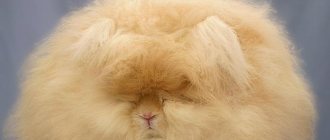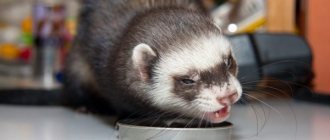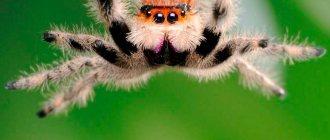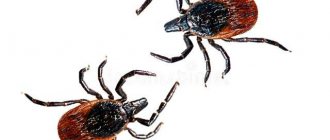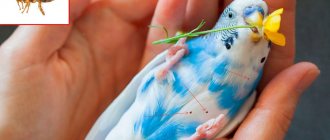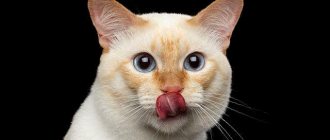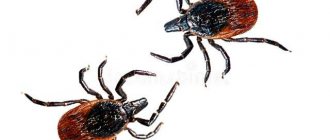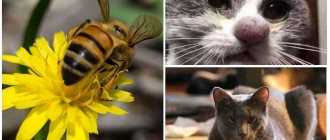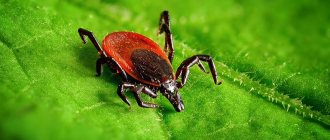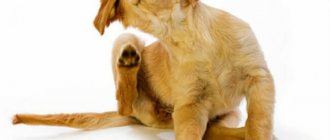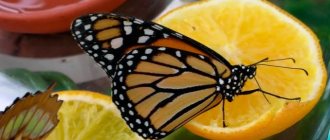It’s no secret to any equestrian that a beautiful hairstyle can ennoble any horse, regardless of the breed. Since ancient times, it has been customary for horses to have their manes and tails braided for the holidays; nowadays, horses’ hairstyles are done for competitions, exhibitions, shows, and simply, if desired, to give the pet an elegant look.
One of the most common competition hairstyles is the bobblehead or rosette hairstyle. It completely opens the horse's neck and looks very elegant, but at the same time this hairstyle is also one of the most labor-intensive. So, be patient and don’t be discouraged if you don’t succeed the first time, as they say, “patience and work...”
Preparation of the workplace
First, we need to prepare to braid your horse's mane. In order for the horse to stand still, it must be tied. It’s a good idea to stock up on food, because the horse will soon get bored of standing in one place and it will start spinning, which can negatively affect the aesthetics of its hairstyle.
Obviously, the place where the horse will stand and you will braid the mane must be sufficiently lit, it is advisable to sweep the floor - it is easier to look for fallen objects on a clean floor. If your horse is tall enough, place a chair. Wear an apron with a pocket - it will be easier to get rubber bands; if you don’t have an apron, it doesn’t matter, just put them next to each other.
Hoof care
Hooves are cleaned before or after basic grooming, there is no fundamental difference. Some people believe that starting with the hooves will make it easier to notice if the horse is lame. Particular attention should be paid to this part after walking on small gravel, stones, sand, which often gets stuck and causes inconvenience.
To care for your horse's hooves you will need:
- hook;
- brushes.
They begin to clean the hooves from the heel, moving along the edge of the front wall. Even though the end of the hook is blunt, it should not be used to clean off dirt in the V-shaped area (arrow). This is a very sensitive part that is brushed with extreme care. If you don't care for your hooves properly, they can become inflamed and even deformed.
For the outside of the hoof, you can use a coarser baleen brush. The same brush should be used to remove dried dirt from the bedding from the legs and rump. When the air temperature is not lower than 0, you can wash your hooves with foamy water and then wipe them dry.
Read also: Trimming a horse's hooves: when and how to perform the procedure?
In summer, other “cosmetic” procedures are also possible. For example, if the outer part (horn) begins to dry out and crack, you can wrap the hooves with damp rags, or even better, keep the horse in a stall with clay diluted with water on the floor for several days. After the procedure, it is necessary to lubricate the horn with Vaseline so that the moisture does not evaporate for as long as possible.
From time to time the horn should be filed, giving the hooves the correct beautiful shape.
Preparing the mane
Now let's prepare the mane. If the mane is dirty, it should be washed with shampoo, but not with conditioner, otherwise it will be slippery. You need to comb it thoroughly on one side, trim it and thin it out slightly. Don't get too carried away with thinning your mane. It is advisable to slightly moisten it - this way the strands will not become shaggy.
There are several ways to weave rosettes for a horse; to choose the most suitable method, you need to consider what competitions you are going to. Do not braid the mane too tightly, otherwise it will cause discomfort to your horse, which can negatively affect the course of the competition. If you are traveling close to a performance, you can use rubber bands when weaving; if you have a competition coming up for several days, then it is better to fix the bumps with a thread, a needle and an adhesive plaster. You can additionally fix the mane using a special varnish or sugar water.
A mane from 12 to 15 cm long is considered ideal for rosettes. It's okay if your four-legged friend's mane doesn't fit into this standard.
We divide the mane into equal strands, usually from 11 to 17, and tie ponytails located at equal distances with elastic bands. As you may have guessed, the number of tails will correspond to the number of sockets. Please note that too many rosettes on a horse will look sloppy, and if there are not enough of them, the hairstyle will quickly fall apart. Start at the back of the head and continue down to the withers.
There are several ways to weave rosettes for a horse; to choose the most suitable method, you need to consider what competitions you are going to.
Features of winter keeping horses
In winter, it is advisable to keep horses in a stall - there is enough space, it is easier to clean, and additional partitions between sections will prevent the spread of infection, if any.
In winter, horses have to spend a lot of time in the stable; they need to be carefully prepared for “wintering”:
- provide warmth and good ventilation;
- remove all sharp corners and dangerous objects.
In winter, it is especially important to change the bedding daily - old hay causes respiratory diseases. Features of winter maintenance:
Features of winter maintenance:
- In cold weather, the horse should walk at least 6 hours a week.
- If it gets very cold, the animals are covered with blankets.
- Brushing their fur regularly helps keep the animals warm.
- Food and water are changed every day.
- Hay is added daily, and preferably more often.
If it is impossible to take a walk, you need to entertain the horse with something - you need to give him attention, play, give him a treat. In winter, the diet is adjusted - it is necessary to replenish the energy that the animal spends on warming up
The winter diet must include:
In winter, the diet is adjusted - it is necessary to replenish the energy that the animal spends on warming up. The winter diet must include:
- Hay. There should be a lot of it - unlimited access. A horse should eat whenever it wants to. The food warms you up and entertains you at the same time. It is advisable to add barley or oat straw.
- Fresh vegetables. Every day they give beets and carrots - they are washed and cut into cubes. They give 5-7 kg per day.
- Cereals. They will saturate the body with energy and warm it.
- Vitamins. In winter, be sure to add fish oil and yeast to the feed.
In winter, a horse weighing 500 kg is an average-sized individual and should receive during the day:
- hay – 10-15 kg;
- vegetables – 7 kg;
- grain – 4 kg;
- vitamins;
- three times water – 20-40 l.
Horses need to be given clean water to drink. Its temperature should be 8-15°C. Since the animal eats a lot of dry food, it is advisable to provide it with free access to water. It is also recommended to give water with mineral supplements to replenish energy costs.
Sometimes horses get the winter blues:
- they begin to chew on the stall;
- kicking their hooves;
- swallow air through the larynx.
All this is due to boredom and cramped conditions; the horse has nowhere to splash out his energy. Because of the blues, colic may begin and teeth hurt. How to get rid of the blues:
- increase walking time;
- give more hay;
- bring special toys to the stable;
- tinker with the animal more – petting, combing, talking.
Weaving method using rubber bands
For training, it’s easier to take bright elastic bands, but if you are already preparing for a competition, the elastic bands should match the color of your mane.
Now we braid the first braid. We also start braiding from the top. It is not necessary to braid a regular braid; if you wish, you can braid it in a French braid.
While braiding, pull the braid down and not towards you, so it will immediately lie in the right direction.
We bend the braid inward, under itself, and if the mane is long, then it is better to fold it in half again. We fix the resulting lump with an elastic band or adhesive tape. We continue this way until we have braided the entire mane.
This weaving method is suitable for traveling to “home” competitions. This method is better suited for short manes.
beauty
The aesthetic function of the horse's mane developed historically in the process of integration of the horse into human history and culture. The mane of domestic horses is regularly washed, combed, trimmed and styled according to the owner's fashion and preferences. Long curls or a perky short hairstyle, and sometimes even pigtails or ponytails, give the modern domestic horse the style and charm necessary for his position. Maintaining a horse's mane in proper order is not a very difficult task, but it is quite troublesome and requires the daily work of the person caring for it.
Weaving method using yarn
For this method you will need:
- strong thread or yarn, for training you can use a bright color, but for competitions, of course, the thread should match the color of the mane
- metal loop - can be made from a hairpin or wire
If the mane is a little dry, wet it again.
We braid the braid, weave it to about the middle and weave a thread into the braid. After the braid is ready, secure its end with woven thread. Then we thread a loop through both ends of the rope/thread. We sew using this loop like a needle - we thread it into the base of the pigtail - it is folded in half (inward) - we should get a braid folded in half with the end of the rope threaded into its own base. After this, we pass through the top of the braid folded in half and thread the rope through the base of the braid. Gently tighten - we get a lump. Now all that remains is to fasten the thread and trim off the excess ends.
Maine ban and undercut
Maine ban looks better with undercut style. If you collect long strands in a Maine ban, then it should be at the back of the head. Too much weight will cause the bun to droop, and a low Maine Ban is undesirable and looks sloppy.
Adding an Undercut style allows you to highlight long strands. As for the beard, any style is acceptable. Thick stubble accentuates facial features and is one of the most common beard styles that goes well with the Undercut.
You can opt for a longer Viking beard, but it shouldn't be scraggly. It should be in harmony with the overall look. A properly executed Man Ban and Undercut should create an image of elegance and, at the same time, ferocity. This style exudes confidence.
Weaving method using a needle and thread
For this method you will need pieces of thread approximately 25 - 30 cm.
We thread the needle and weave the thread into the braid so that the needle remains dangling at the bottom. It is not recommended to tighten the braid at the base. After you finish braiding the braid, secure the tip with a needle, and bend the tip of the braid inward, with the thread and needle still sticking out of the braid. Now take a needle and thread it through the base of the braid, folding the braid in half. We make a few stitches. If necessary, you can fold the braid in half again. Then we fix the thread and cut it.
Weaving with a needle and thread
So, we have discussed several ways of braiding cone rosettes, we recommend you try them all. However, remember - you need to braid the braids with the same tension - otherwise they will look different. The tighter the socket is, the longer it will last.
Body structure
The structure of a horse is determined by its type and general constitution, therefore different breeds of horses differ in appearance. Saddlebred horses have lighter, movable bones, well-developed shoulder blades and thin limbs. Working horses are muscular, massive with wide, strong bones and thick legs.
The neck consists of lateral parts, a crest with a mane and a throat. Normally it should be about 25-30% longer than the head, but the overall length and shape depends on the breed of horse. It is believed that a long, straight neck helps horses develop greater speed, which is why it is characteristic of riding breeds. Working breed horses have a wider, shorter and stronger neck; due to its shortened respiratory tract, such horses are less tired. The best shape is considered to be a straight neck, but with a good outlet and a convex nape.
A special part of the horse’s body, which is located immediately behind the neck and looks like a small convex hump. Looking at the skeleton of a horse, you can see that the withers are formed by connecting the shoulder blades with the rest of the body. However, the shape and height of the withers determines the ability to run quickly. The longer it is, the more it allows you to extend the front legs. But the high withers, like the horse in the photo, ensure good mobility of the neck.
The back is one of the most important parts of the body of a horse and pony, on which performance depends. It should be strong and proportional to the body. The wide, short back allows you to carry large loads. However, such a back reduces the maneuverability of the horse. In working horses you can often see a sagging long back. This phenomenon characterizes a loose constitution, but it is precisely this that transmits the work of the hind limbs, increasing traction.
The croup is the back part of the horse's body, which should be 35% of the length of the entire body. The croup should also be wide and strong to allow good support from the hind legs. The croup of all horses is different in shape: it can be sloping, straight or normal. The more sagging the croup is, the better for the horse. The shape and type of croup also very often determines how high or low a horse's tail is.
Limbs
Horses' legs have a complex structure. So, on the front leg there is a scapula, shoulder, elbow, forearm, wrist, metacarpus and pastern. The hind leg consists of the thigh, stifle, shin, heel, hock and pastern. The limbs end in hooves. There are also chestnuts and spurs on the legs, and some breeds have long tufts of hair on the pasterns - brushes or friezes.
A special role in the life of a horse is played by the hoof, which must be free of cracks, creases or other defects in the sole. In draft horses they are larger and wider than in racehorses.
To maintain the performance of animals, it is very important to properly monitor the health of the hooves, clean them on time or shoe them if necessary. For more details on the structure of a horse’s hoof, see our other thematic articles.
Read also: Bay horse color
Frequently Asked Questions About Viking Hairstyles
Are there any secrets to growing long hair?
Hair takes time to grow! The key is to reduce your stress levels by drinking plenty of water and eating a healthy diet. How you treat yourself has a huge impact on how your hair will look. If the body is under stress, hair growth stops.
How to make your beard thicker?
To tame your hair, it is recommended to use a beard comb that is not made of plastic. A wide-tooth comb will separate the hairs perfectly. Start at the bottom of the beard and work your way up and down, this will provide the look of a "fuller" and tougher beard. You can also use beard oil to enhance your look. When it comes to hair products, it's all about personal preference, and experimentation is key.
